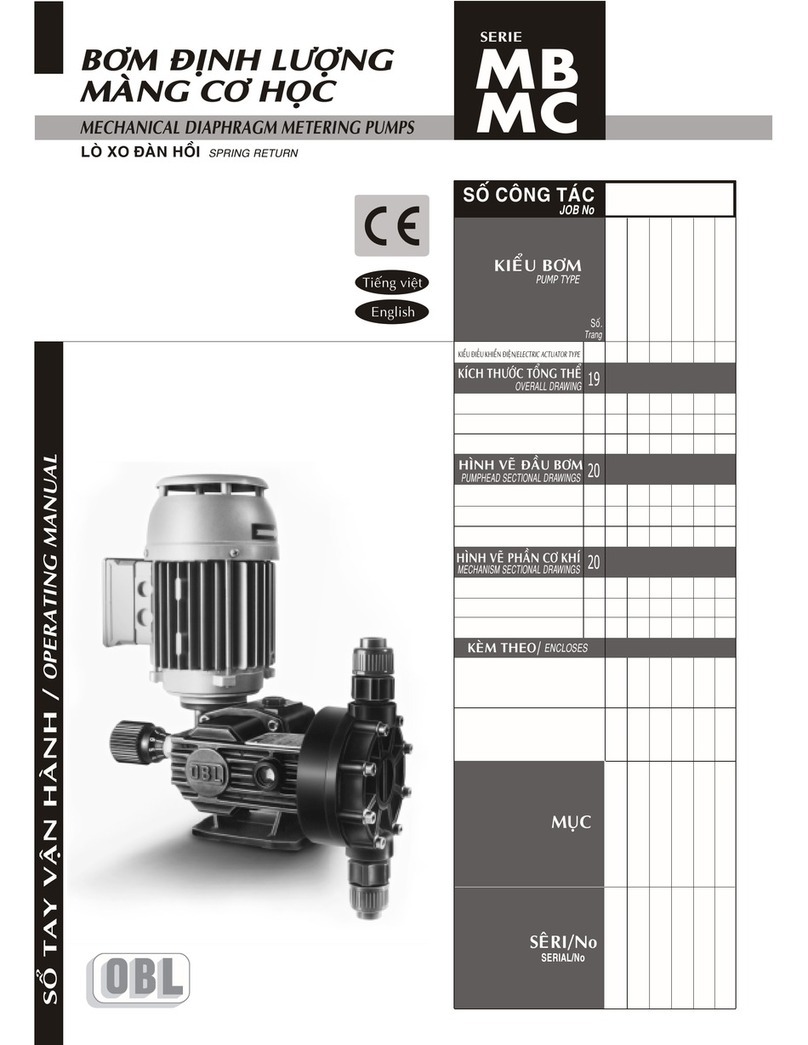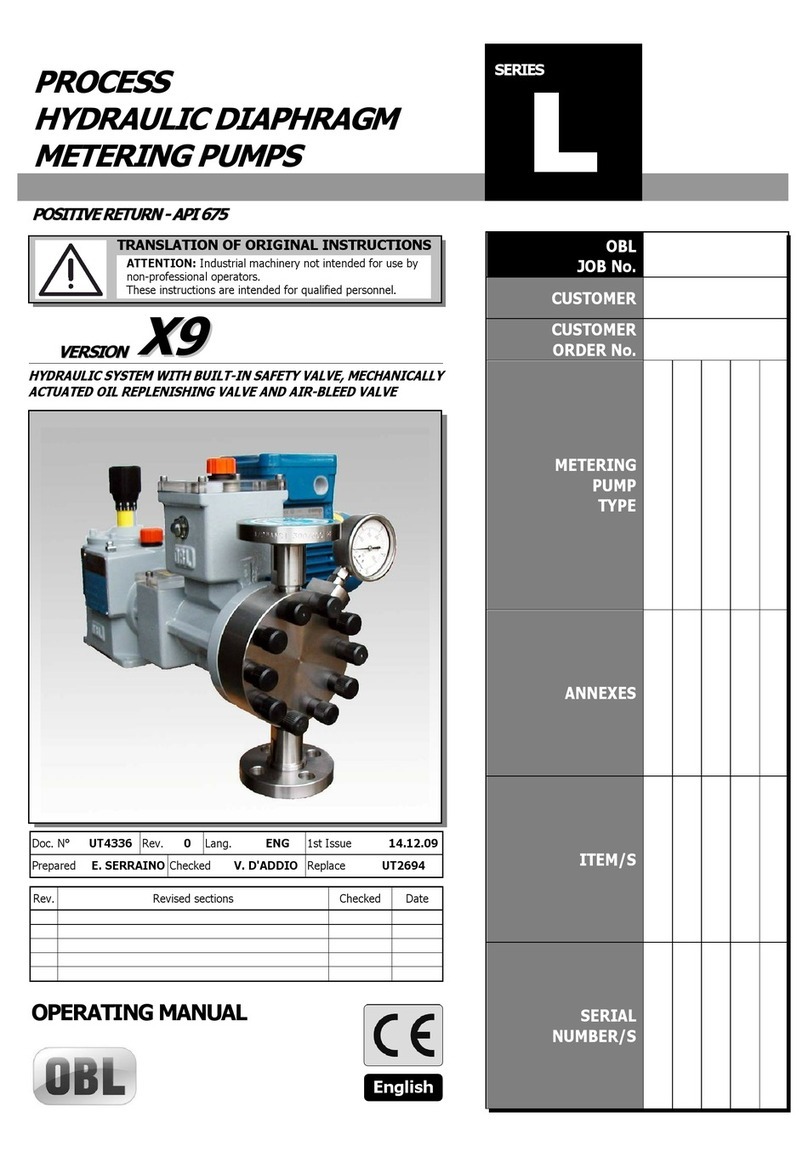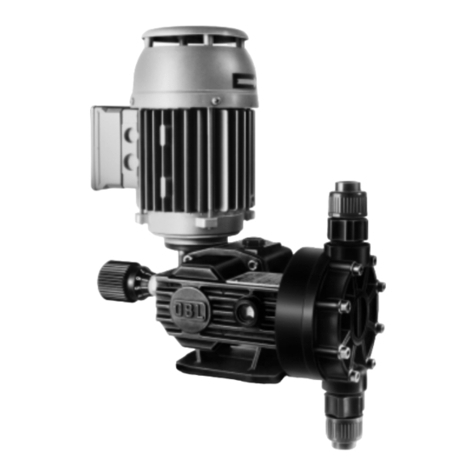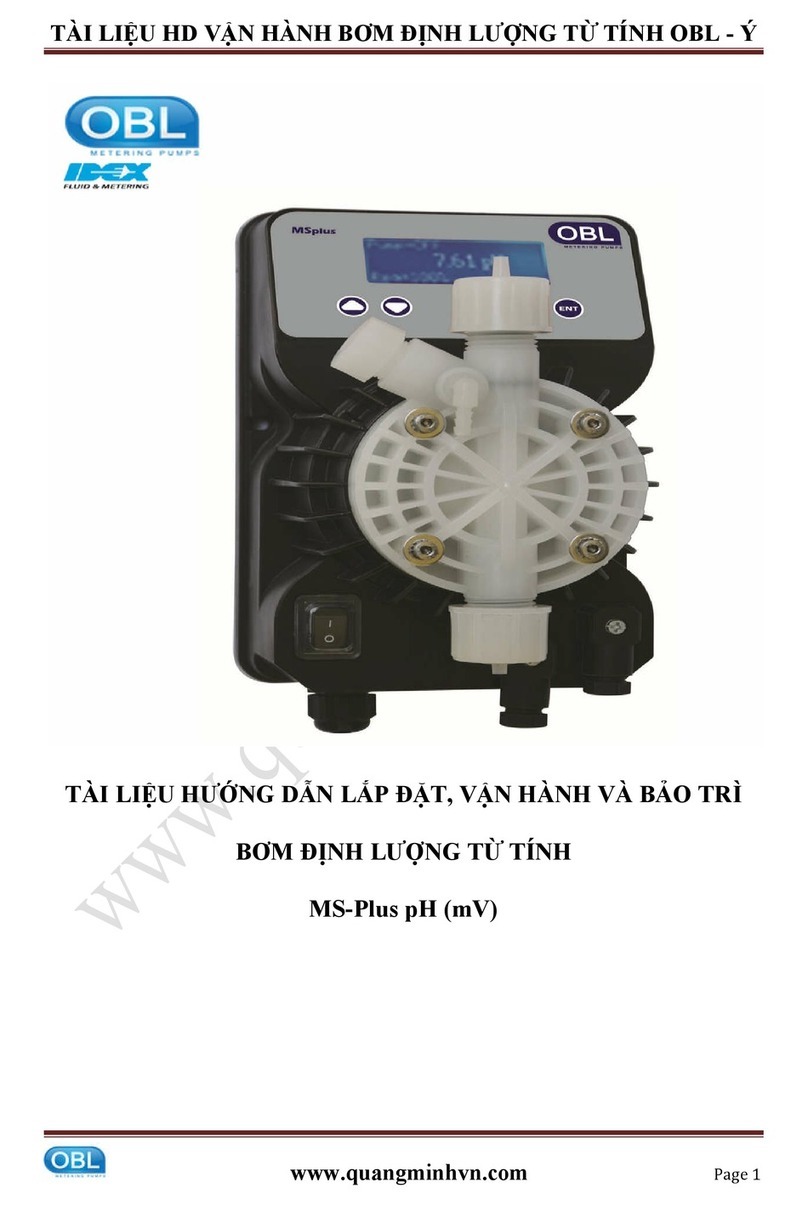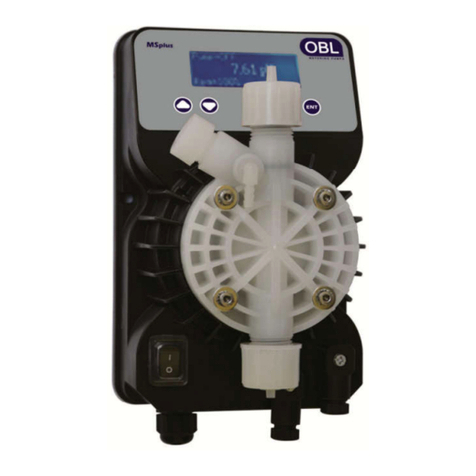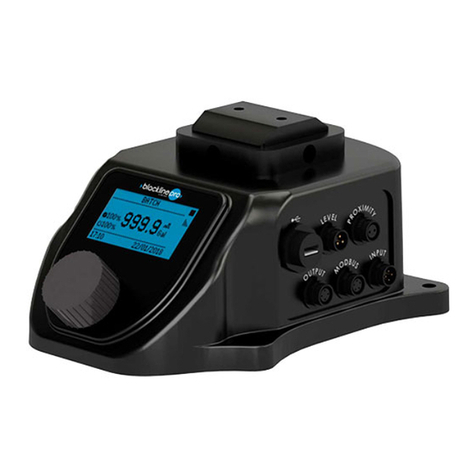1.1
1
4
1
0° 180° 360°
1.2
Fig. 2
Theoretical flow rate
The theoretical flow rate
corresponds exactly to
the volume displaced by
the diaphragm during
its motion. Its graphic
representation is a dia-
gonal straight line
whose progression is
determined by the
diaphragm stroke increasing (fig.3).
Actual flow rate
The actual flow rate is inevi-
tably less than the theoreti-
cal flow rate because of the
losses due to the reaction
time of the valves. The ratio
between these two flow
rates determines the volu-
metric efficiency of the
pump. The efficiency
depends on pump size, pump head type (plunger or diaphragm), liquid
to be pumped, viscosity of the liquid, working
pressure, etc.
(fig. 4).
0° 50° 100°
10
5
0° 50° 100°
10
5
FLOW RATE
ACFLOWRATE
TH.FOLW RATE
TH.FOLW RATE
FLOW RATE
CLOSED
OPEN
OPEN
CLOSED
DISCHARGE STAGESUCTION STAGE
2°COMPLETE CYCLE
1° COMPLETE CYCLE
SUCTION
FLOW RATE
PER HOUR
SNAPSHOT
FLOW RATE
•The reciprocating motion of the diaphragm determines the flow thanks to the inlet and outlet check valves of the pump head
(fig. 2).
During the suction stage the inlet valve opens because of the depression created by the diaphragm while the outlet valve remains clo-
sed. The product enters the pump head and goes out throught the outlet valve when pushed by the diaphragm during the discharge
stage.
FLOW RATE
THE FLOW RATE LINEARITY
The operating of an OBL mecha-
nical diaphragm reflects the flow
rate linearity of a plunger pump.
This is proved by the graph here
on the left that evidences the
linear proportionality between
flow rate and adjustment per-
centage.
200
150
100
50
025% 50% 75% 100%
Adjustment %
Flow rate l/h
Table A
•The OBL’s metering pumps “MB/MC” series are con-
trolled-volume reciprocating pumps.
The crank gear is driven by an electric motor and the
strokes per minute of the diaphragm are given by an
integral, oil-splash-lubricated , endless
screw/wormwheel reduction gear (fig.1).
In MB/MC’s mechanical diaphragm metering pumps,
suction stage (diaphragm backward stroke) is by spring
return.
The MB/MC series metering pumps are characterised by
a so called mechanical diaphragm, where the reciproca-
ting movement is transmitted directly by the crank gear.
The mechanical diaphragm works, both giving the swept
volume, acting basically as plunger, and as separator between crank
gear and the handled fluid.
•The MB/MC mechanical diaphragm metering pumps give a double
advantage:
- Leak-free head.
- No plunger packing and related wearing problems.
These results are achieved thanks to the unique structure of the diaph-
ragm (patented), which bears the whole thrust of the handled liquid,
and, like a plunger pump, guarantees a linear flow rate (table A).
DESCRIPTION OF THE PUMP
GENERAL CHARACTERISTICS
GENERAL CHARACTERISTICS
Fig. 1


















